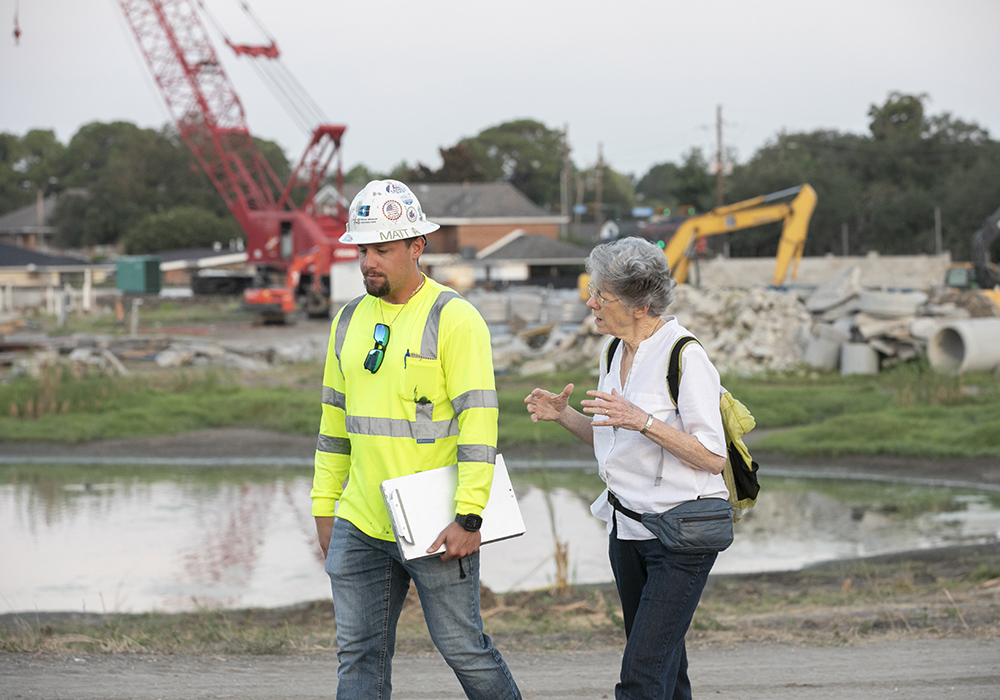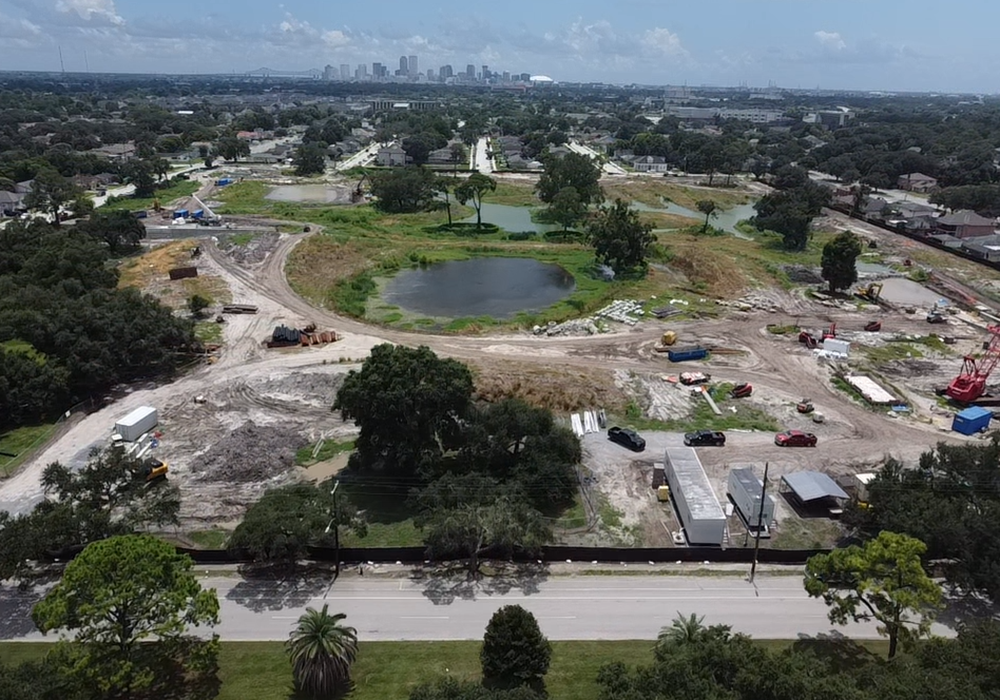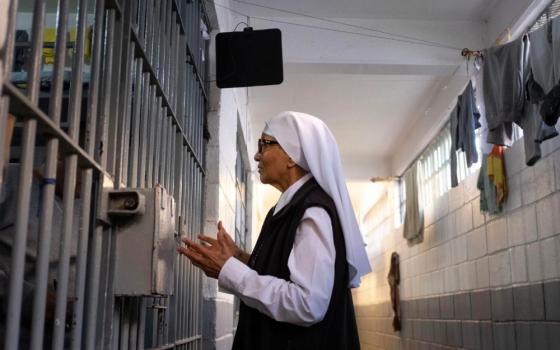
Sr. Joan Laplace speaks with a construction worker in September 2025. The Congregation of the Sisters of St. Joseph's Mirabeau Water Garden in New Orleans is under construction, and a completion date for Phase 1 is in sight. (Courtesy of the Congregation of Sisters of St. Joseph)
It started as a dream in 2008. There were years of making plans, finding grants and dealing with bureaucracy before the project was announced in 2016.
Now, all these years later, the Congregation of the Sisters of St. Joseph's Mirabeau Water Garden in New Orleans is under construction, and a completion date for Phase 1 is in sight.
Excess rainwater will be pumped onto the site where it will be absorbed into the soil, evaporate into the air, and any that's left will flow to the nearby bayou when it can handle the flow again. That water will also create a habitat for plants and animals and help fight the problem of the city sinking further below sea level.
"The sisters are very excited," said Sr. Pat Bergen. "They're very excited to see something good and worthwhile with our property, just like when they lived there."

The Mirabeau Water Garden, after years of delays, is finally under construction in New Orleans. (Courtesy of the Congregation of Sisters of St. Joseph)
The 25-acre site near Bayou St. John, in the heart of the city, had been the congregation's provincial house since the 1950s. But Hurricane Katrina destroyed the first floor in 2005 with 8 feet of water and mud, and a fire in 2006 destroyed the second floor.
By the time of Katrina, only about 30 sisters were living there; after it was destroyed there was no sense in rebuilding it. But they also weren't sure what to do with the land: Developers were salivating over it, but the last thing the sisters wanted was more chain restaurants and strip malls that would hurt the environment instead of helping it.

Sr. Pat Bergen with architect J. David Waggonner III, who designed the water garden after proposing the idea in 2008 (Courtesy of the Congregation of Sisters of St. Joseph)
Then in 2008 they met architect J. David Waggonner III, who told the sisters one of the biggest problems facing New Orleans is the way it has fought the water that surrounds it. Yes, much of the city lies below sea level, but it didn't always. A century of pumping water out of the ground to lower the water table has caused the land to sink — a process called subsidence — up to 8 feet in places, Waggonner said. That means the more engineers use pumps against the water, the deeper the hole they find themselves in.
Waggonner told the sisters their land could help solve that issue: When complete, pumps will lift water from the overloaded storm sewer up to the surface, where it will flow through swales and slowly fill low-lying areas. There, it will water the landscape, soak into the soil and evaporate. When the storm sewers have capacity again, the remaining water — up to 10 million gallons of it — will flow out of Mirabeau back into the city storm sewer system and to the bayou.
The land the sisters still consider holy, a place where generations of sisters lived and worked and served God, now will serve the neighbors, their city and the environment, and will be a model for other cities dealing with stormwater.
Phase 1, now months into construction, is building the water garden; Phase 2 entails building an educational component, making the site a demonstration project and working model for how others can live with water rather than trying to fight it. Phase 1 is currently expected to be complete in March 2026.

St. Joseph Sr. Pat Bergen speaks at the January 2016 news conference announcing the plans to convert the congregation's former provincial house in New Orleans into a water garden. Listening are then-Louisiana Gov. John Bel Edwards, second from left, and then-mayor Mitch Landrieu, third from left. (Courtesy of the Congregation of Sisters of St. Joseph)
The plan was announced in 2016, and after years of bureaucratic and other delays, the sisters thought they'd be breaking ground in 2020. Then came more delays.
"When elections happen, all new people get named and have to learn what's their responsibility, so some things jump to the top of their list," Bergen said. "It took a long time to get to the top of the list."
But sisters are persistent.
"We were meeting [with city officials] every single month since we came up with this idea. The last Monday of the month, 10 a.m., we were there," Bergen said. "It seems like an infinite amount of Mondays that we were there."
Advertisement
But despite changes in leadership and priorities, there were city officials who believed in the project and kept pushing for it, she said. It is happening thanks to their work.
The sisters have never regretted not selling the land for millions of dollars, as the water garden will help keep the neighborhood full of homes that surrounds it from flooding, and will do it in a way that helps the environment and fights the subsidence in New Orleans.
The only regret — which couldn't be helped — Bergen said, is that it wasn't built sooner and replicated elsewhere.
"If this were done in Houston, Houston would not have suffered as it has," Bergen said, referring to Hurricane Harvey. "All these places that flooded would have been helped. A lot of people would have been saved from a lot of suffering."





